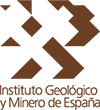
Type of resources
Available actions
Topics
Keywords
Contact for the resource
Provided by
Years
Formats
Representation types
Update frequencies
status
Service types
Scale
-
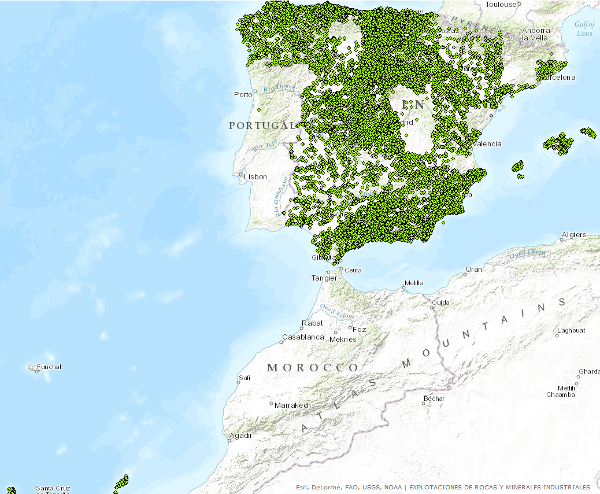
WFS service provides access to basic information related to the mining operations (both abandoned or operating continuously or intermittently) and minerals occurrences of industrial minerals and rocks. Service was created in the framework of the Minerals4EU project and its harmonizated according to the INSPIRE requeriments-
-

WFS service provides access to basic information related to the mining operations (both abandoned or operating continuously or intermittently) and minerals occurrences of industrial minerals and rocks. Service was created in the framework of the Minerals4EU project and its harmonizated according to the INSPIRE requeriments-
-

A database of faults showing geological evidence of activity during the Quaternary period in Iberia (last 2.6 million years according to the official limit set by IQS in 2009). The Quaternary Active Fault Database of Iberia (QAFI) is a project under constant revision and updating as a consequence of the advancing studies and knowledge on the structures capable of generating earthquakes in Iberia. QAFI could never be considered complete or definitive, due to the scientific nature of the data that contains in it as well as for the modus operandi followed in its construction: the altruist cooperation of a large number of Earth science researchers. The database (mdb. and shp. format) is hosted and maintained by the Geological Survey of Spain (IGME) and is accessible to the research and technical community and to society in general.
-

Dataset contains information related to the mining operations (both abandoned or operating continuously or intermittently) and minerals occurrences of industrial minerals and rocks. These data have been generated by the IGME along numerous projects since the early 70s to the present. It has national coverage.
-
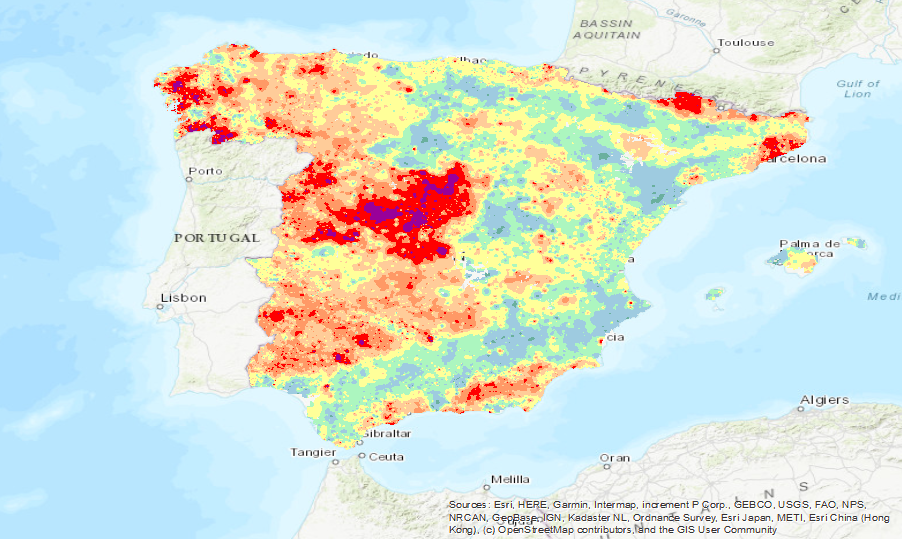
Visualisation service of the Map of Dysprosium (Dy) isocontents, one of the chemical elements obtained in the Geochemical Atlas of Spain Project, distributed in stream sediments (14,864 samples), superficial soils (0-20 cm.) (13,505 samples) and deeper soils (20-40 cm.) (7,682 samples).
-
Visualisation service (WMS) of the Map of Praseodymium Isovalues (Geochemical Atlas of Spain, 2012).
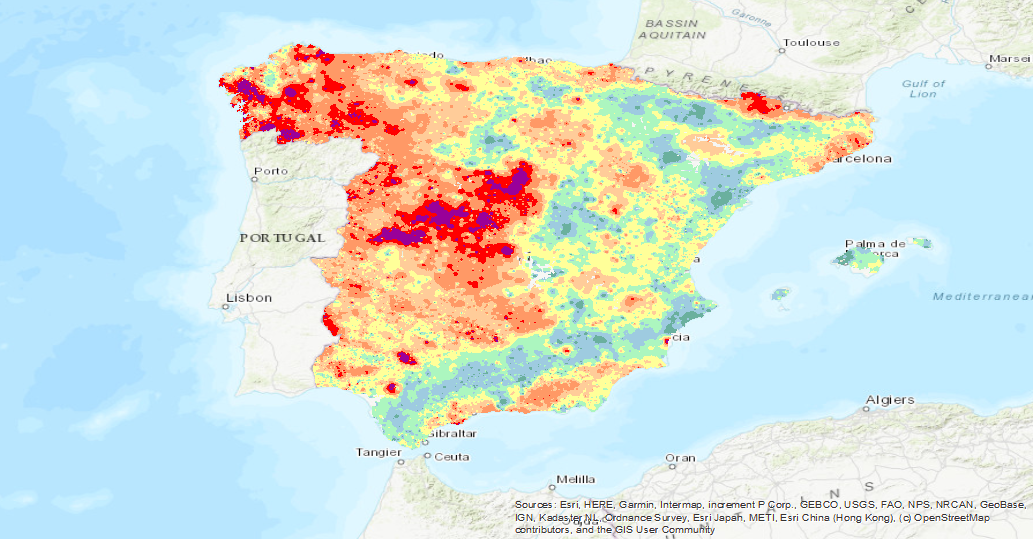
Visualisation service of the Map of Praseodymium (Pr) isocontents, one of the chemical elements obtained in the Geochemical Atlas of Spain Project, distributed in stream sediments (14,864 samples), superficial soils (0-20 cm.) (13,505 samples) and deeper soils (20-40 cm.) (7,682 samples).
-
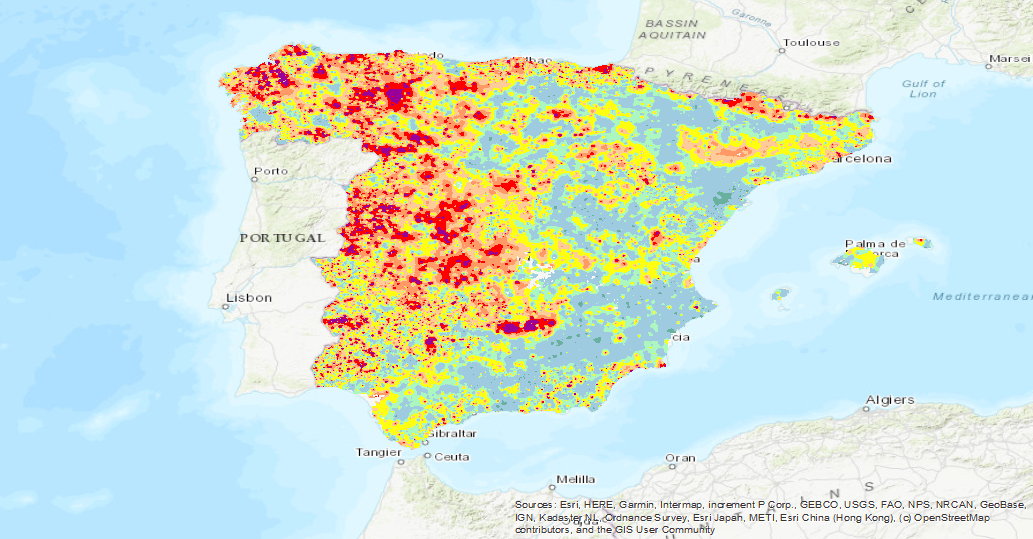
Visualisation service of the Map of Titanium (Ti) isocontents, one of the chemical elements obtained in the Geochemical Atlas of Spain Project, distributed in stream sediments (14,864 samples), superficial soils (0-20 cm.) (13,505 samples) and deeper soils (20-40 cm.) (7,682 samples).
-
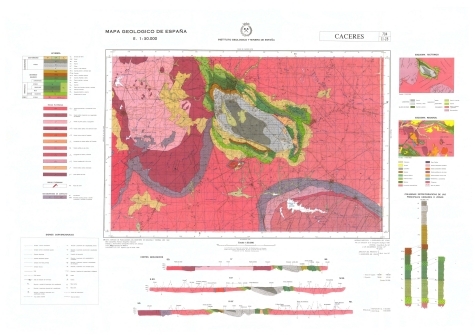
The sheet 704 (CÁCERES) of the National Geological Map (MAGNA), was made in 1982 and published in 1997 by the Geological Survey of Spain. It is distributed at scale 50000. The geological map shows the nature of materials (rocks and sediments) that appear on the surface, their spatial distribution and geometric relationships between the different cartographic units represented. A geological mapping unit is the grouping of one or more lithologies with common age range, which is represented on the map at a scale or defined resolution. Each mapping unit, and the different geological structures, is represented on the map with a symbolism itself. The representation of these units on the topographic base map provides some three-dimensional information that is completed with other geological data and geological sections, stratigraphic profiles, polls, etc. The map legend is a pictogram representing the spatial relationship of the different mapping units (chronology, overlapping, geometric relationship, lateral facies changes, etc.). It also includes structural, hydrogeological and geological location of the sheet within the regional schemes. Since 1991, the Geological Map Series MAGNA is made inseparably with the geomorphological map on the same scale. This map incorporates everything on the surface geology and provides a structured and accurate information of the land forms. It is organized on the basis of morphogenesis and morphocronology incorporated the map using the corresponding chronostratigraphic column included in a table / legend inspired by the geological map. The forms, erosional and depositional, are represented on the map by individualized by symbols and patterns of color and surface deposits or lithological formations elements that provide information. For each sheet of the series MAGNA there is an explanatory report published, edited and in digital format. The digital information is stored in coverage and Shape format (ESRI). There is a guide that describes the physical structure of the digital information and its codification.
-
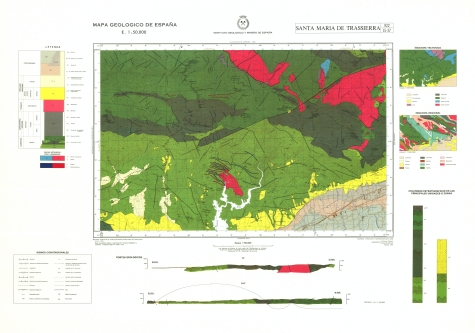
The sheet 922 (SANTA MARÍA DE TRASSIERRA) of the National Geological Map (MAGNA), was made in 1975 and published in 1995 by the Geological Survey of Spain. It is distributed at scale 50000. The geological map shows the nature of materials (rocks and sediments) that appear on the surface, their spatial distribution and geometric relationships between the different cartographic units represented. A geological mapping unit is the grouping of one or more lithologies with common age range, which is represented on the map at a scale or defined resolution. Each mapping unit, and the different geological structures, is represented on the map with a symbolism itself. The representation of these units on the topographic base map provides some three-dimensional information that is completed with other geological data and geological sections, stratigraphic profiles, polls, etc. The map legend is a pictogram representing the spatial relationship of the different mapping units (chronology, overlapping, geometric relationship, lateral facies changes, etc.). It also includes structural, hydrogeological and geological location of the sheet within the regional schemes. Since 1991, the Geological Map Series MAGNA is made inseparably with the geomorphological map on the same scale. This map incorporates everything on the surface geology and provides a structured and accurate information of the land forms. It is organized on the basis of morphogenesis and morphocronology incorporated the map using the corresponding chronostratigraphic column included in a table / legend inspired by the geological map. The forms, erosional and depositional, are represented on the map by individualized by symbols and patterns of color and surface deposits or lithological formations elements that provide information. For each sheet of the series MAGNA there is an explanatory report published, edited and in digital format. The digital information is stored in coverage and Shape format (ESRI). There is a guide that describes the physical structure of the digital information and its codification.
-
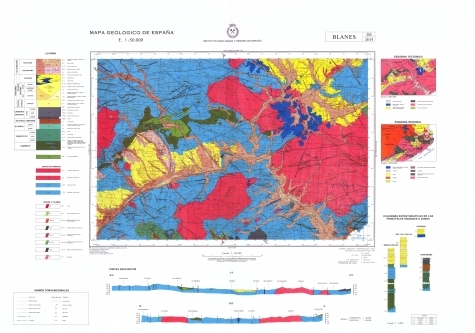
The sheet 365 (BLANES) of the National Geological Map (MAGNA), was made in 1983 and published in 2010 by the Geological Survey of Spain. It is distributed at scale 50000. The geological map shows the nature of materials (rocks and sediments) that appear on the surface, their spatial distribution and geometric relationships between the different cartographic units represented. A geological mapping unit is the grouping of one or more lithologies with common age range, which is represented on the map at a scale or defined resolution. Each mapping unit, and the different geological structures, is represented on the map with a symbolism itself. The representation of these units on the topographic base map provides some three-dimensional information that is completed with other geological data and geological sections, stratigraphic profiles, polls, etc. The map legend is a pictogram representing the spatial relationship of the different mapping units (chronology, overlapping, geometric relationship, lateral facies changes, etc.). It also includes structural, hydrogeological and geological location of the sheet within the regional schemes. Since 1991, the Geological Map Series MAGNA is made inseparably with the geomorphological map on the same scale. This map incorporates everything on the surface geology and provides a structured and accurate information of the land forms. It is organized on the basis of morphogenesis and morphocronology incorporated the map using the corresponding chronostratigraphic column included in a table / legend inspired by the geological map. The forms, erosional and depositional, are represented on the map by individualized by symbols and patterns of color and surface deposits or lithological formations elements that provide information. For each sheet of the series MAGNA there is an explanatory report published, edited and in digital format. The digital information is stored in coverage and Shape format (ESRI). There is a guide that describes the physical structure of the digital information and its codification.
 Catalogo de metadatos del IGME
Catalogo de metadatos del IGME